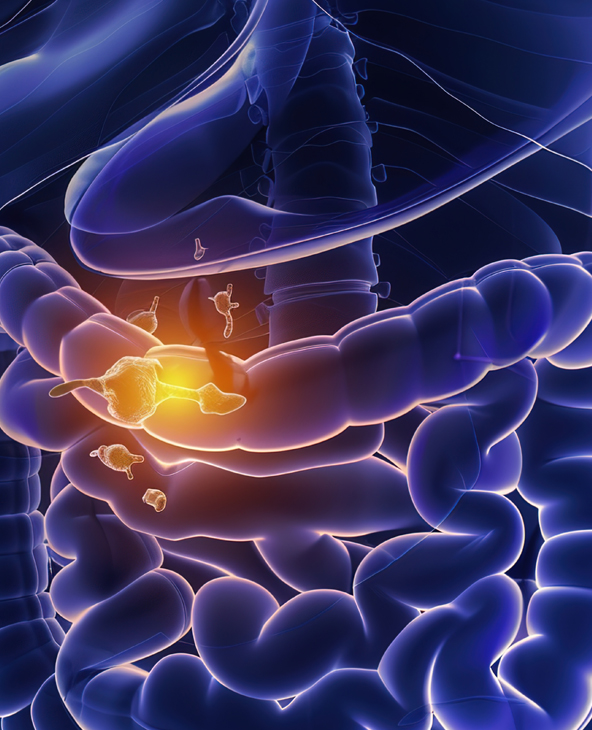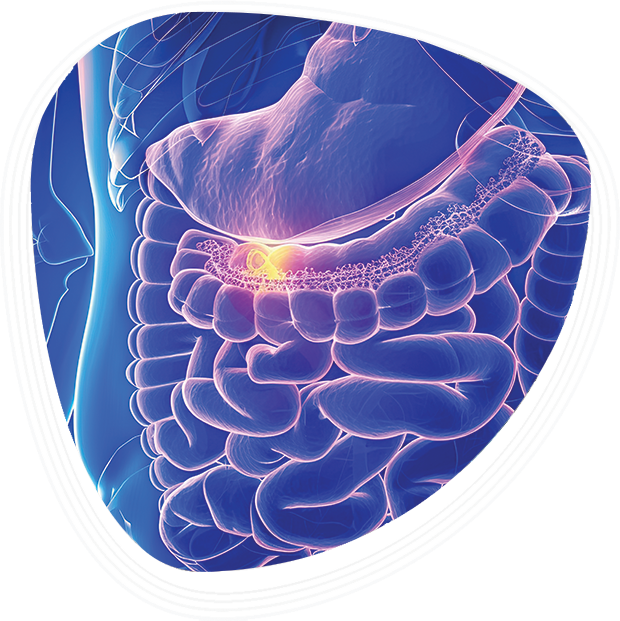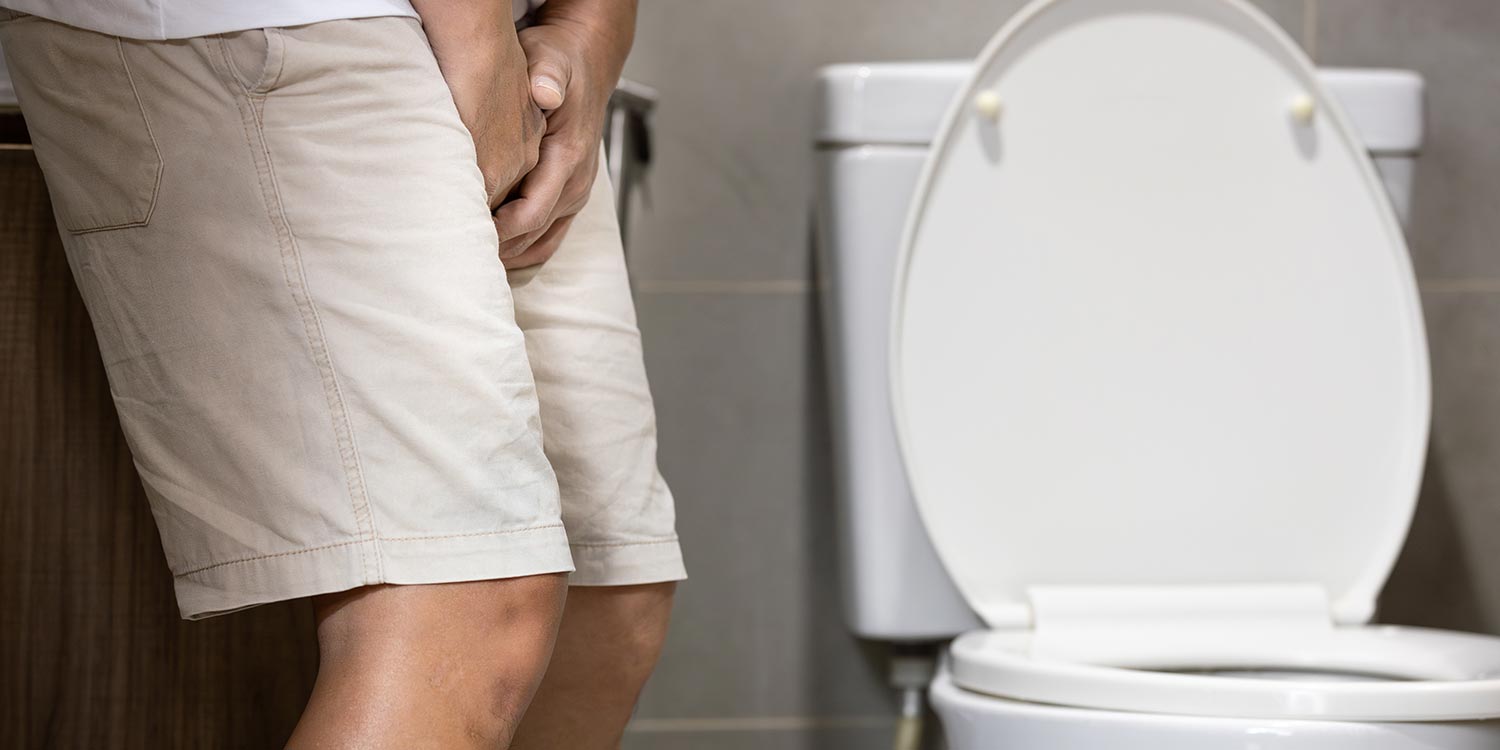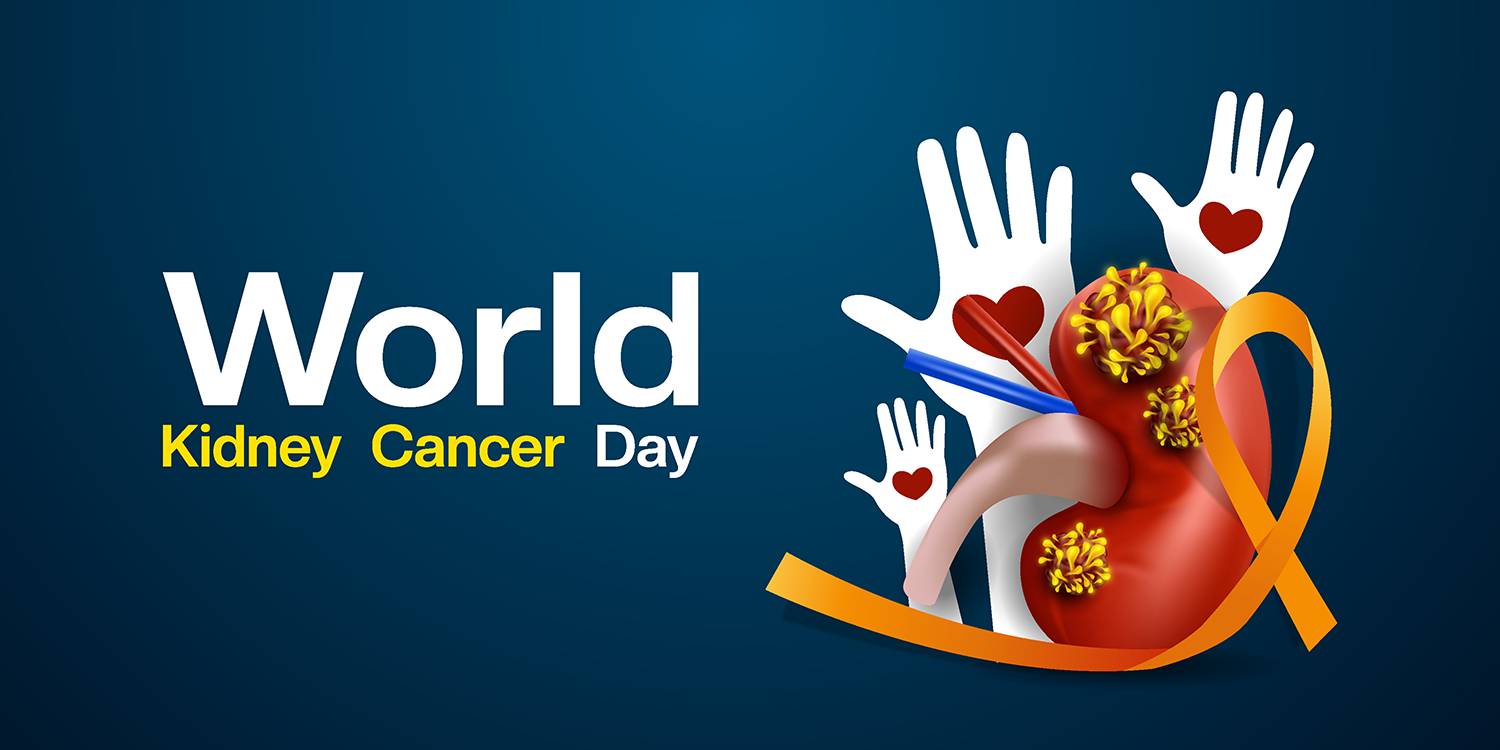The Whipple procedure, medically known as pancreaticoduodenectomy, is a complex surgery performed to remove cancerous tumours from the head of the pancreas, along with the duodenum (the first part of the small intestine), distal bile duct, gallbladder, and nearby lymph nodes. After the diseased tissues are removed, the surgeon reconstructs the digestive tract by joining the remaining pancreas, bile duct, and stomach to the small intestine, allowing normal digestion and nutrient absorption to continue.
At Graphic Era Hospital, Dehradun, our Hepatobiliary and Surgical Oncology Unit specialises in performing the Whipple procedure with exceptional precision and multidisciplinary expertise. Combining advanced imaging, precision-guided surgical interventions, and advanced monitoring, our team of experienced pancreatic and gastrointestinal surgeons ensures accurate diagnosis, meticulous surgical execution, exceptional patient safety, minimal perioperative complications, and optimal outcomes.

Why is the Whipple Procedure Performed?
The Whipple procedure is performed to treat a variety of cancers and complex digestive conditions affecting the pancreas, bile duct, duodenum, and surrounding parts of the digestive tract. It is often the only surgical option that offers the potential for long-term survival in select cases. Doctors may recommend the Whipple procedure in cases, such as:
- Pancreatic cancer in the head of the pancreas: This is the most common reason for the Whipple procedure. Tumours in this area often block the bile duct or press on nearby structures, causing symptoms such as jaundice, pain, or digestive issues. When detected early and the cancer is confined to the pancreas, removing it through surgery offers the best chance for long-term survival.
- Bile duct tumours: These tumours develop in or near the bile duct and can obstruct the normal flow of bile, leading to jaundice and other complications. Surgery is often needed to remove the affected section and restore proper bile drainage.
- Ampullary cancer: This rare cancer occurs at the point where the bile duct and pancreatic duct join and empty into the small intestine. Because of its location, it is usually detected earlier than pancreatic cancer, and the Whipple procedure can be highly effective in achieving good outcomes.
- Duodenal cancer: Tumours in the first part of the small intestine may grow into surrounding structures if not treated. The Whipple procedure removes the affected section and prevents further spread.
- Benign or pre-cancerous growths: Certain cysts or lesions in the pancreas or surrounding structures can carry a significant risk of becoming cancerous over time. Surgery may be advised to remove these before malignant changes occur.
- Chronic pancreatitis or cystic lesions: In select cases where chronic inflammation or cystic changes cause severe pain, digestive problems, or structural damage, the Whipple procedure may be performed to relieve symptoms and prevent further complications.
Schedule Your Appointment with
Our Expert Doctors
We are dedicated to driving lasting, positive transformation in healthcare management through innovation and patient-centered solutions.
Whipple Procedure vs Other Pancreatic Surgeries
Different types of pancreatic surgeries are performed depending on the location, size, and stage of the tumour, as well as the patient’s overall health. The Whipple procedure is distinct because it targets cancers and other conditions in the head of the pancreas and nearby structures, offering the best chance for long-term survival in eligible patients.
Here’s how the Whipple procedure compares with other common pancreatic surgeries:
- Whipple Procedure (Pancreaticoduodenectomy): Involves removing the head of the pancreas, part of the small intestine, gallbladder, and bile duct, followed by reconstruction of the digestive tract. It is primarily done for cancers in the head of the pancreas, ampullary cancer, or bile duct tumours.
- Distal Pancreatectomy: Removes the body and tail of the pancreas, usually for tumours located in these regions. In some cases, the spleen may also be removed. This surgery is not suitable for tumours in the head of the pancreas.
- Total Pancreatectomy: Involves removing the entire pancreas, along with parts of the stomach, small intestine, gallbladder, and spleen. It is recommended only in select cases where the disease is widespread but still surgically resectable. Patients will require lifelong insulin and enzyme replacement after this procedure.
- Palliative or Bypass Procedures: When the tumour cannot be completely removed (unresectable), surgeons may create bypasses to relieve symptoms such as jaundice, pain, or bowel obstruction, improving quality of life even if cure is not possible.
Steps Involved in the Whipple Procedure
The Whipple procedure is a complex surgery that requires careful planning, surgical precision, and coordinated post-operative care. Although every case is unique, the procedure typically involves the following key steps:
- Pre-surgical evaluation and anaesthesia: Before surgery, patients undergo detailed imaging scans, blood tests, and anaesthesia assessment to ensure they are fit for major surgery. During the procedure, advanced anaesthesia monitoring is used to maintain stability and patient safety.
- Removal of affected structures: The surgeon removes the head of the pancreas, part of the small intestine (duodenum), the gallbladder, and a portion of the bile duct. In some cases, part of the stomach may also be removed if required for complete tumour clearance.
- Reconstruction of the digestive tract: After removal, the surgeon reconstructs the digestive pathway by joining the remaining pancreas, bile duct, and stomach to the small intestine. This allows food, bile, and pancreatic juices to flow normally, enabling proper digestion.
- Vascular reconstruction (if required): If the tumour involves nearby major blood vessels, such as the portal or mesenteric veins, these vessels are carefully reconstructed to restore normal blood flow.
- Closure and post-operative monitoring: Once the surgery is complete, the area is carefully closed, and the patient is transferred to the ICU for close monitoring. Pain control, fluid balance, and vital signs are closely managed during the initial recovery period.
How to Prepare for Whipple Procedure
Proper preparation before surgery plays an important role in ensuring a smooth surgical experience and recovery. Patients are advised to follow medical guidance closely and take certain steps to get their body ready for major surgery. Key aspects of preparation include:
- Medical evaluation and tests: A thorough check-up is done to assess overall health and fitness for surgery. This includes blood tests, imaging scans, lung and heart evaluations, and an anaesthesia assessment.
- Nutritional support: Many patients with pancreatic or bile duct conditions experience weight loss or poor appetite. A nutrition plan may be advised to improve strength and immunity before surgery, sometimes with the help of supplements.
- Medication review: The surgical team will review all current medications, including blood thinners or diabetes medicines, and may ask patients to stop or adjust certain drugs in the days leading up to surgery.
- Lifestyle preparation: Stopping smoking, limiting alcohol, and maintaining light physical activity can support better healing and reduce the risk of complications after surgery.
- Planning for hospital stay and recovery: Patients should make arrangements for their hospital stay, post-operative care, and support at home. Having a family member or caregiver ready to assist after discharge can make recovery smoother.
Risks and Complications of Whipple Surgery
The Whipple procedure is a major abdominal surgery, and like all complex operations, it carries certain risks. While advances in surgical techniques and post-operative care have made the procedure safer, patients should be aware of possible complications to make informed decisions. Common risks include:
- Infection: Wound infections or internal infections may occur after surgery. These are usually managed with antibiotics and careful monitoring.
- Bleeding: Some bleeding during or after surgery is expected, but significant bleeding may require blood transfusions or further intervention.
- Delayed gastric emptying: The stomach may take longer to empty its contents into the small intestine, causing symptoms such as bloating, nausea, or vomiting. This usually improves with time and supportive care.
- Pancreatic or biliary leak: After the pancreas and bile duct are reconnected to the intestine, small leaks can occur at the join. These are monitored closely and often managed with drains or minor procedures.
- Nutritional challenges: Changes in digestion may lead to weight loss, difficulty digesting certain foods, or the need for enzyme supplements to aid digestion.
- General surgical and anaesthesia risks: These include risks such as blood clots, lung infections, or reactions to anaesthesia, similar to other major surgeries.
Most of these risks can be reduced with careful pre-surgical preparation, experienced surgical teams, and close post-operative monitoring. At Graphic Era Hospital, strict infection control protocols, advanced surgical techniques, and round-the-clock ICU support help minimise complications and promote safer recovery.
Why Choose Graphic Era Hospital for the Whipple Procedure?

Whipple Surgery Recovery and Life After Surgery
Recovery after a Whipple procedure takes time and involves careful monitoring, nutritional support, and gradual return to daily activities. Most patients stay in the hospital for one to two weeks, depending on their overall health and how well they recover after surgery. The initial days are usually spent in the ICU, followed by transfer to a surgical ward once the patient is stable.
Key aspects of recovery include:
- ICU and hospital monitoring: Patients are closely monitored for vital signs, fluid balance, pain control, and signs of complications. Tubes and drains may be placed temporarily to support healing.
- Pain management: Specialised pain relief methods, such as epidural analgesia or intravenous medications, are used to keep patients comfortable during recovery.
- Dietary progression: Eating usually starts with liquids and soft foods, gradually moving to a normal diet. Some patients may need pancreatic enzyme supplements to help digest food properly.
- Mobilisation and physiotherapy: Gentle movement and breathing exercises begin soon after surgery to prevent complications such as blood clots or lung infections. Physiotherapists support patients in regaining strength and mobility.
- Follow-up care: Regular follow-ups are important to monitor recovery, check for complications, and plan any further treatment such as chemotherapy if needed.
Life after the Whipple procedure may involve some adjustments, including changes in diet, medication, and regular monitoring, but with proper care, many patients are able to return to daily activities over time. Early recovery support and long-term follow-up play a key role in improving quality of life and treatment outcomes.
Whipple Procedure Survival Rates & Outcomes
Survival rates and outcomes after the Whipple procedure depend on several factors, including the stage of the disease at diagnosis, the type of tumour, surgical expertise, and the patient’s overall health. When performed at the right stage and by experienced surgical teams, the procedure can offer significantly better long-term outcomes compared to non-surgical treatments.
- Early-stage pancreatic cancer: For patients whose tumours are confined to the head of the pancreas and can be completely removed, the Whipple procedure offers the best chance for long-term survival. Five-year survival rates in such cases are significantly higher than for advanced disease.
- Ampullary and bile duct cancers: These cancers are often detected earlier than pancreatic cancer, and surgical outcomes are generally more favourable. Many patients experience meaningful long-term survival following complete tumour removal.
- Post-surgical recovery and quality of life: With proper post-operative care, nutritional support, and follow-up treatment, many patients are able to return to daily activities and maintain a good quality of life after surgery.
At Graphic Era Hospital, hepatobiliary and gastrointestinal surgeons use advanced surgical techniques and multidisciplinary care to achieve optimal outcomes. Early detection and timely surgery remain the most important factors influencing survival rates.
Top Whipple Procedures and Surgical Approaches at Graphic Era Hospital
- Standard Whipple Procedure (Pancreaticoduodenectomy)
- Pylorus-Preserving Whipple Surgery
- Laparoscopic or Minimally Invasive Whipple Surgery
- Pancreaticojejunostomy and Biliary Reconstruction
- Vascular Reconstruction (if required)
- Comprehensive Pain Management and Anaesthesia Support
- Nutritional and Physiotherapy Support
Patient Stories
Blog
Frequently Asked Questions (FAQs)
What is the Whipple procedure and when is it recommended?
The Whipple procedure, or pancreaticoduodenectomy, is a surgery used to remove tumours from the pancreas, bile duct, or duodenum. It is typically recommended for pancreatic cancer, bile duct cancer, or non-cancerous tumours that affect nearby organs.
How is Whipple’s procedure surgery performed at Graphic Era Hospital in Dehradun?
At Graphic Era Hospital, experienced hepatobiliary specialists perform Whipple’s surgery using open or minimally invasive techniques. The operation involves removing the affected part of the pancreas and surrounding tissues, followed by careful reconstruction of the digestive tract.
What are the common complications of Whipple procedure surgery?
Possible complications may include infection, delayed gastric emptying, bleeding, or leakage from surgical connections. These risks are minimised through advanced surgical techniques, close monitoring, and expert post-operative care.
How long does it take to recover after Whipple surgery?
Most patients stay in the hospital for about 1–2 weeks after surgery, followed by a few months of gradual recovery at home. Physiotherapy, dietary adjustments, and regular check-ups help restore strength and normal function.
What is life like after Whipple procedure surgery?
With proper rehabilitation, most patients return to normal daily activities. Dietary modifications, enzyme supplements, and regular follow-ups ensure good digestion and long-term health.
Is the Whipple procedure worth it for pancreatic cancer treatment?
Yes. When performed at the right stage by skilled surgeons, Whipple’s procedure offers the best chance for long-term survival and improved quality of life in pancreatic or bile duct cancer cases.
What does the Whipple surgery scar look like, and will it heal over time?
The scar is usually a thin line across the upper abdomen, which fades significantly with proper care and time. Minimally invasive techniques result in smaller scars and quicker healing.
an I get Whipple’s procedure surgery near me in Uttarakhand?
Yes. Graphic Era Hospital in Dehradun provides advanced Whipple’s procedure surgery and complete pancreatic cancer care with experienced specialists and state-of-the-art facilities.
How can I book a consultation for Whipple procedure surgery at Graphic Era Hospital?
You can book an appointment online or by calling the hospital helpline 1800-889-7351. Our team will guide you through consultation, diagnosis, and treatment planning with a qualified hepatobiliary surgeon.















